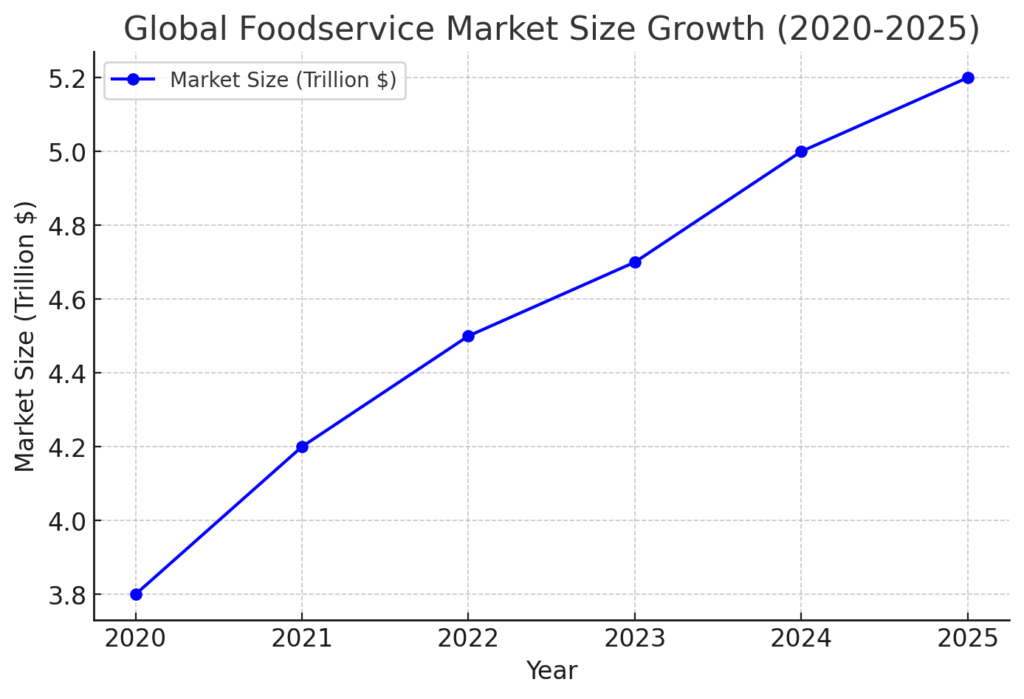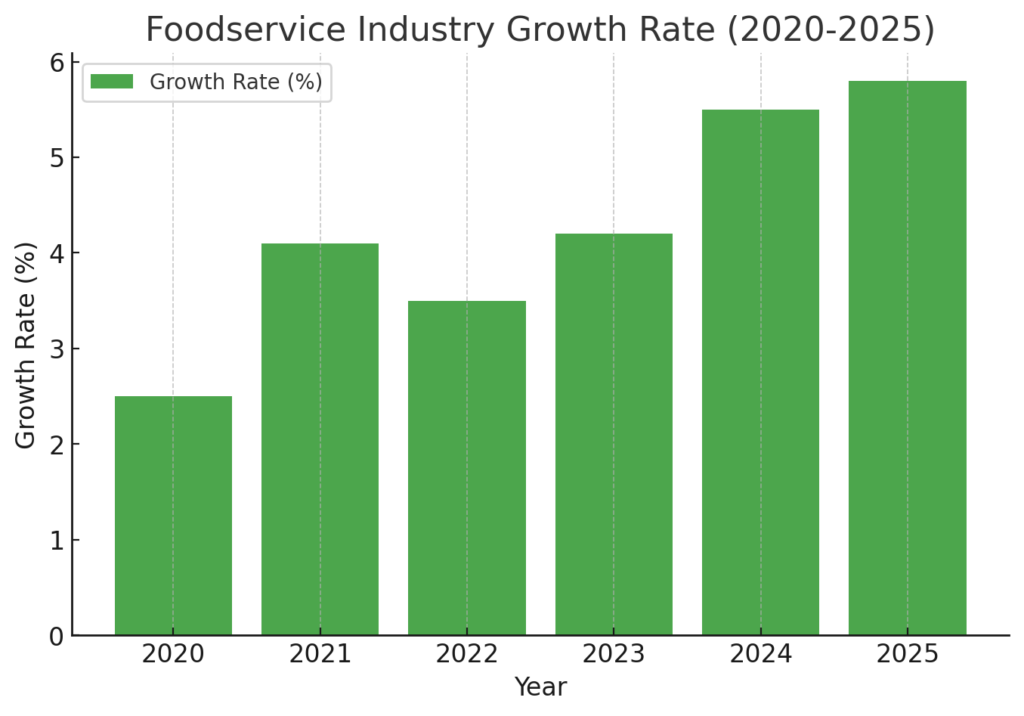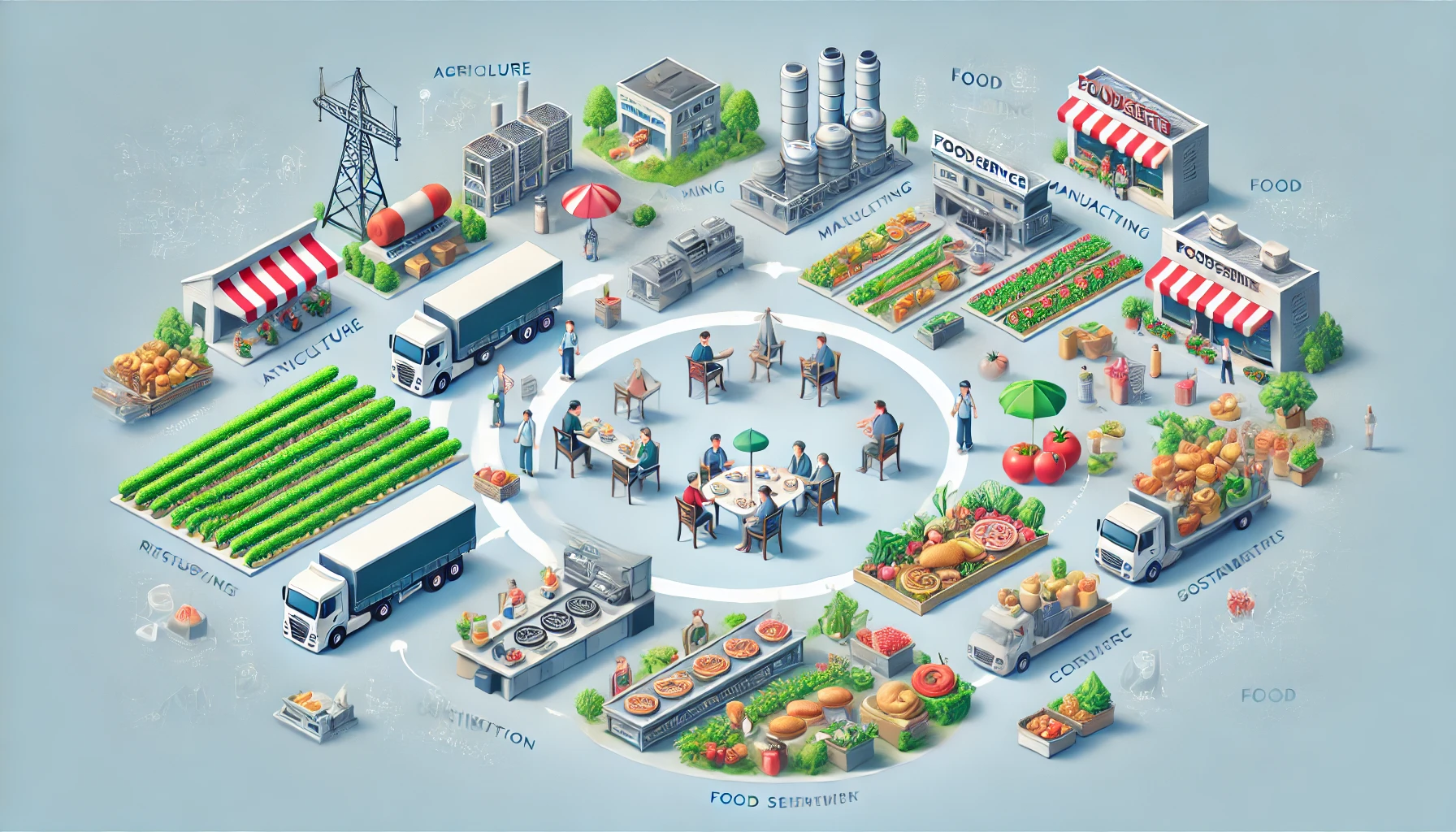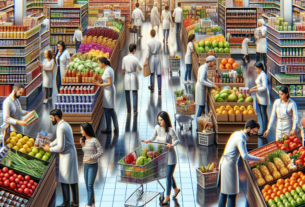Introduction
The global foodservice industry has undergone significant transformation in recent years, shaped by evolving consumer behaviors, technological advancements, and macroeconomic challenges. In 2025, the sector is experiencing a surge in innovation and sustainability efforts, as well as grappling with labor shortages, supply chain disruptions, and changing customer expectations. This report delves into the key trends defining foodservice in 2025, explores the major players in the industry, and highlights emerging opportunities for businesses to thrive in an increasingly competitive landscape.

Market Overview
Global Market Size and Growth Projections
The foodservice industry is projected to reach a market value of $5.2 trillion in 2025, marking a 5.8% CAGR growth from 2023. While North America and Europe remain dominant markets, the Asia-Pacific region continues to see the fastest growth, driven by urbanization, rising disposable incomes, and an increasing appetite for convenience-oriented dining solutions.
Consumer Spending and Dining Preferences
Consumer spending on dining out has rebounded post-pandemic, with 70% of households dining out at least once per week. However, price sensitivity remains a factor, leading to a rise in demand for affordable yet high-quality foodservice options. Key consumer preferences shaping the industry include:
- Health-conscious eating: Demand for plant-based and organic menu options has surged.
- Convenience-driven dining: Fast casual restaurants and ghost kitchens continue to expand.
- Technology integration: Digital ordering, AI-powered recommendations, and contactless payments have become industry standards.
Key Trends in Foodservice Industry 2025
1. Rise of Fast Casual and Hybrid Dining Models
Fast casual dining continues to outperform traditional fast food and full-service restaurants due to its balance of speed, affordability, and quality. Hybrid dining models—offering both dine-in and delivery options—have become the new norm, with chains investing in modular kitchen designs to optimize both experiences.
2. Technological Innovations Reshaping Foodservice
Technology is at the core of the foodservice revolution in 2025. Key advancements include:
- AI and Machine Learning: Restaurants are using AI-powered analytics for menu optimization, personalized recommendations, and inventory management.
- Robotic Automation: Automated kitchens and AI-driven chefs are enhancing efficiency and reducing labor dependency.
- Blockchain for Food Safety: More restaurants are leveraging blockchain technology for supply chain transparency and traceability.
3. Growth of Ghost Kitchens and Virtual Brands
The rapid expansion of ghost kitchens—delivery-only establishments—continues to disrupt the industry. By 2025, over 30% of new restaurant concepts are delivery-exclusive. Virtual brands are thriving on online food delivery platforms, allowing restaurateurs to test new concepts without the overhead costs of physical locations.
4. Sustainability and Ethical Sourcing
Sustainability is no longer optional. In 2025, 85% of major foodservice brands have pledged carbon-neutral operations by 2030. Key sustainability initiatives include:
- Plant-based menu expansions: Global plant-based food sales have increased by 25% year-over-year.
- Food waste reduction: AI-powered waste tracking systems help restaurants minimize losses.
- Eco-friendly packaging: Biodegradable and compostable packaging solutions have become industry standards.
5. Labor Shortages and Workforce Automation
Labor shortages remain a persistent challenge in foodservice. Many operators are responding by increasing wages and improving working conditions. However, automation in food preparation and service is filling the gap, with robotic waitstaff and self-service kiosks becoming more common.
6. Rise of Subscription-Based Dining
Subscription-based meal services have gained traction in 2025. Consumers are subscribing to monthly meal plans that offer discounts on frequent dining, leading to increased brand loyalty and predictable revenue streams for restaurants.
7. The Impact of Inflation on Menu Pricing
Inflation has driven up the cost of ingredients and labor, forcing restaurants to rethink their pricing strategies. Strategies for maintaining profitability include:
- Dynamic pricing models that adjust based on demand and time of day.
- Smaller, high-margin menus focusing on best-selling items.
- AI-driven cost optimization for inventory and supply chain management.
Challenges Facing the Foodservice Industry in 2025
Despite the industry’s resilience, several challenges persist:
- Supply chain disruptions: Rising transportation costs and ingredient shortages continue to pressure margins.
- Regulatory compliance: New food safety and labeling regulations demand increased operational transparency.
- Consumer expectation shifts: Millennials and Gen Z consumers prioritize experiences and sustainability, forcing brands to adapt their value propositions.
- Competitive market landscape: The rise of direct-to-consumer meal brands and grocery-store-prepared foods is intensifying competition.
Future Opportunities for Growth
1. Expansion into Emerging Markets
Countries in Latin America, Africa, and Southeast Asia are experiencing a boom in foodservice demand. International brands are eyeing strategic expansions into these high-growth regions.
2. Investing in AI and Personalization
Personalized dining experiences driven by AI-powered data insights will set brands apart. AI-generated menu suggestions and chatbot-powered reservations are streamlining customer interactions.
3. Integrating Alternative Proteins
As demand for alternative proteins continues to rise, restaurants investing in lab-grown meat and insect-based protein offerings are gaining a competitive edge.
4. Strengthening Digital Marketing and Online Presence
SEO-optimized restaurant websites, influencer collaborations, and AI-driven ad targeting are proving essential in driving digital customer acquisition.
5. Leveraging Food as an Experience
Experiential dining—offering interactive meal prep, immersive themes, and high-tech dining atmospheres—is drawing customers back to physical restaurants.
SEO Strategy for Foodservice Industry Content
To rank high in search engine results, foodservice businesses should implement a robust SEO strategy. Key SEO elements include:
- Keyword optimization: Use high-volume keywords like “best restaurants near me,” “fast casual dining trends,” and “sustainable foodservice.”
- Long-form content: Publish authoritative blog posts (1,500+ words) on industry insights and dining trends.
- Local SEO: Optimize Google My Business listings and ensure NAP (name, address, phone number) consistency across platforms.
- Mobile-first indexing: Ensure website speed, responsiveness, and mobile usability for better search rankings.
- Video and visual content: Utilize short-form video content on platforms like TikTok and Instagram Reels for restaurant promotions.
Conclusion
The foodservice industry in 2025 is characterized by rapid technological advancement, sustainability initiatives, and shifting consumer expectations. While challenges such as inflation, labor shortages, and supply chain disruptions persist, opportunities for growth remain abundant. Restaurants that embrace AI, automation, and sustainability while prioritizing digital marketing and customer experience will be best positioned for success in the evolving foodservice landscape.
Key Takeaways:
- Fast casual and hybrid models are dominating the market.
- AI, robotics, and blockchain are transforming foodservice operations.
- Sustainability efforts are now industry standards, not optional.
- Labor shortages are driving increased automation and wage hikes.
- Subscription-based dining and ghost kitchens are shaping future business models.
- SEO and digital marketing are essential for restaurant success in 2025.
By staying ahead of these trends, foodservice businesses can thrive and remain competitive in the rapidly evolving global market.




